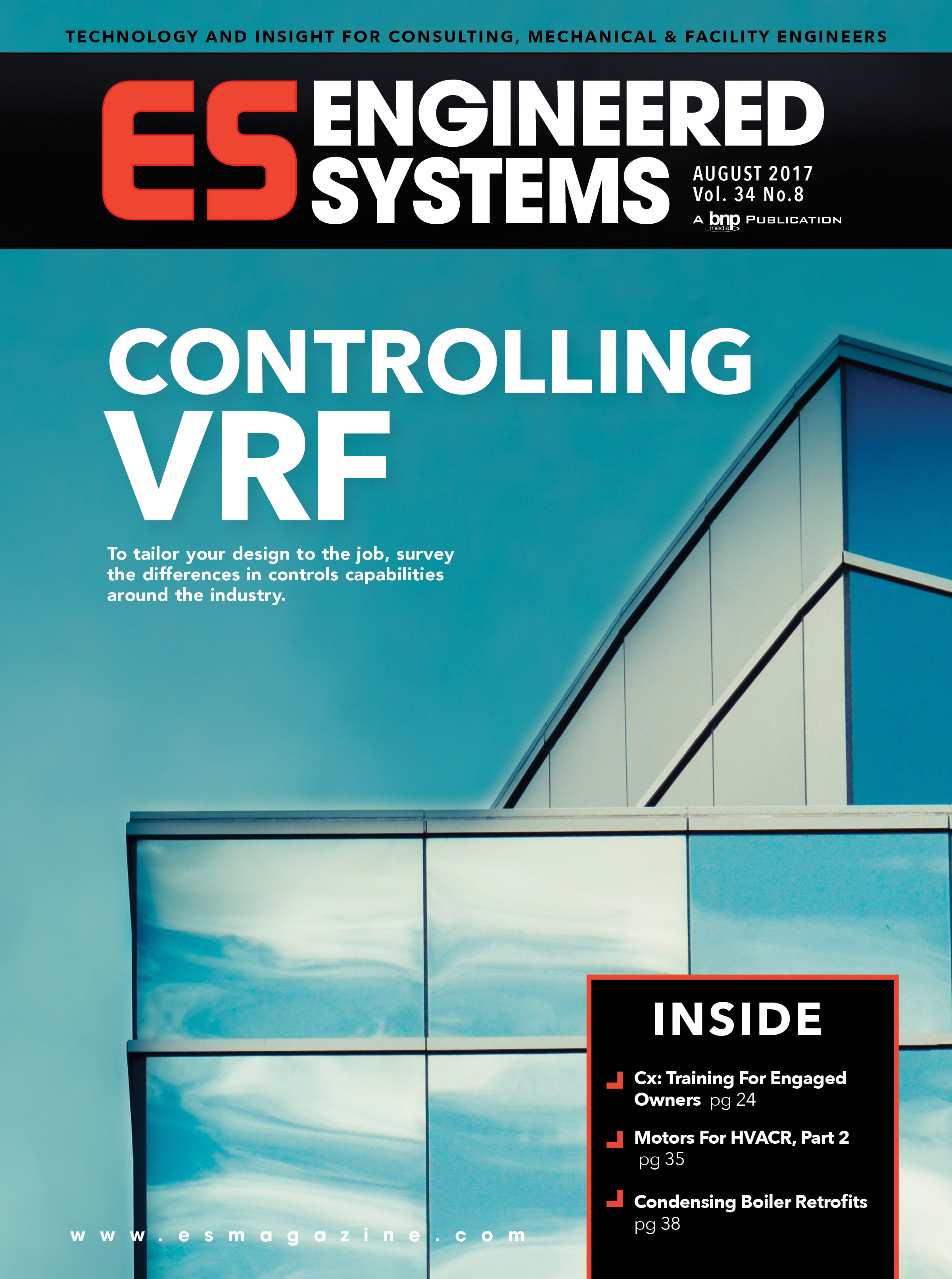The item posed a question to investigators: "Was the building properly commissioned when it was first constructed, including testing and balancing of the hvac system?"
As a commissioning consultant for hvac systems, this question made me wonder what activities I perform to verify proper IAQ. I realized that all my activities provide a level of confidence that an hvac system will not be the cause of IAQ problems.
Design Questions
IAQ factors are so numerous, it is almost easier to list things that don't affect it. Contributing factors include building materials, configuration, and use; office equipment; occupancy; operations maintenance; janitorial practices; climate; pollution; and hvac systems.Commissioning usually does not directly address these factors, except for hvac systems.
Hvac commissioning in general verifies that systems are installed and work in accordance with the design documents. If the system design does not include IAQ considerations, then verification of an "inadequate" system does not achieve preferred results. Thus, commissioning consultants should include IAQ items as part of the commissioning design review. IAQ criteria should be included in a design intent document and implemented by design drawings and specifications.
Mechanical system design affects basic IAQ parameters such as space temperatures, space relative humidity, and space outdoor air ventilation rates. Do the design documents indicate the expected parameters? The expected levels should be in a design intent document.
Has the design team performed and documented a system's heating and cooling load analysis? Does the system have modulating outside air dampers, variable-speed fans, vav terminal units, and exhaust fans? Does the system design provide for adequate outside air to occupied spaces during all system operating configurations? Has the design team analyzed these configurations and documented the results? Is the outside airflow rate control strategy appropriate for the system's physical configuration? Do the sequences of operation match the system's components and performance parameters?
Closely related to the review of the design are testing, adjusting, and balancing (TAB) issues. Does the design provide adequate information to the TAB contractor? Are air and water flows specified? Is the specified outside airflow equal to (or greater than for positive pressure) the specified exhaust flow for all operational conditions? Are balancing dampers indicated on drawings?
Is system instrumentation adequate, or does the configuration allow the TAB contractor to use temporary instrumentation? Do the specifications require the TAB contractor to measure outside airflow under minimum and maximum conditions? Can outside airflow be measured directly with pitot tube measurements or a flow hood?
Maintenance Questions
Will the system continue to perform to the level of the design intent? Is there access to mechanical systems and their components? Does the access allow for cleaning and filter changeout? Do ceiling panels allow access to terminal units and fire/smoke dampers? Are roof access ladders needed? Is there a chemical injection system for cooling towers? Is cooling coil condensation drained appropriately?
Commissioning design review should include possible detrimental system interactions due to physical locations. Are exhaust fans' discharges located away from outdoor air intakes? Are combustion gases exhausted near outdoor air intakes? Can moisture drift from cooling towers enter the building?
One Less Suspect
Once the design is finalized and the proj-ect proceeds to the construction phase, the commissioning consultant can perform site observations to confirm that various design features are being properly constructed.The construction phase is the best time to check for adequate duct cleanliness. Facilities personnel may never have a chance to review internal duct surfaces for possible sources of IAQ problems.
At the end of the construction phase, the commissioning consultant tests the hvac systems to verify that they operate in accordance with the design documents.
IAQ problems may still occur. However, confidence that the mechanical systems are not the culprit of IAQ problems allows IAQ investigators to focus on other potential problem sources.ES


